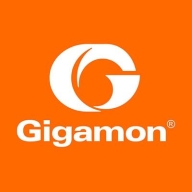

Find out in this report how the two Security Information and Event Management (SIEM) solutions compare in terms of features, pricing, service and support, easy of deployment, and ROI.
Premium support provides direct access, while distributor support quality can vary.
It is ineffective in terms of responding to basic queries and addressing future requirements.
The support was excellent.
The technical support by Gigamon Deep Observability Pipeline is good because it has a local architect in my area.
Without proper integration, scaling up with more servers is meaningless.
Cortex XSIAM is highly scalable.
The product was easy to install and set up and worked right.
It works really nice and performs really efficiently after configuration.
Overall, Cortex XSIAM is stable.
Obtaining validation for integrations from Palo Alto takes around eight months, which is quite long.
Cortex XSIAM needs improvements in terms of data onboarding, parsers, and third-party integration supports.
Cortex XSIAM is on the expensive side and requires substantial improvement in pricing.
Cortex XSIAM is pretty expensive, and the licensing process is not very comfortable.
The product is very expensive.
The first impression is that XSIAM would be more expensive than others we tried.
The advanced visualization capabilities of the product are important for understanding security trends in an organization.
Cortex XSIAM allows us to onboard almost every device, whether they are on-prem or on SaaS.
One of the valued aspects of the product is its use of artificial intelligence to detect security vulnerabilities.
The Pipeline's Comprehensive Insights into data flows have helped improve operational efficiency and security.
| Product | Market Share (%) |
|---|---|
| Cortex XSIAM | 3.0% |
| Gigamon Deep Observability Pipeline | 0.2% |
| Other | 96.8% |


| Company Size | Count |
|---|---|
| Small Business | 9 |
| Midsize Enterprise | 2 |
| Large Enterprise | 4 |
| Company Size | Count |
|---|---|
| Small Business | 3 |
| Midsize Enterprise | 1 |
| Large Enterprise | 5 |
Cortex XSIAM acts as a critical element for SOC foundations, integrating SIEM and EDR capabilities, valued for threat detection and seamless security orchestration with Palo Alto Networks products.
Organizations find Cortex XSIAM beneficial for SOC foundations due to its capability to integrate SIEM and EDR tools, facilitating data collection, detection, and response. It connects with third-party data sources while reducing management effort and offering cost-effective alternatives to competitors like CrowdStrike and Trend Micro. Featuring automation and integration with Palo Alto Networks products, Cortex XSIAM enhances threat detection. Unified architecture allows a comprehensive view of attacks, further supported by machine learning and integration with existing vendor solutions, ensuring that users gain insights without significant manual log analysis.
What are Cortex XSIAM's key features?
What benefits are evident in Cortex XSIAM reviews?
Industries implement Cortex XSIAM mainly in technology-driven sectors where centralized endpoint protection and automation of forensic investigation are paramount. By integrating several third-party systems for incident response, companies in competitive markets leverage its attributes for heightened operational security efficiency. However, users note areas for improvement, such as Attack Surface Management and integration enhancements, to better suit tech-heavy industries needing extensive connectivity with cybersecurity solutions.
Gigamon Deep Observability Pipeline is a comprehensive network visibility solution that provides real-time insights into network traffic. It offers SSL inspection and mobile network monitoring for traffic monitoring purposes. The solution optimizes networks, aids in security inspection, and improves firewall performance. It is praised for its performance, power, straightforward integration, stability, and ease of initial setup.
With Gigamon, organizations can gain complete visibility into their network traffic, identify potential threats, and take proactive measures to prevent them. The solution is ideal for organizations of all sizes, including enterprises, service providers, and government agencies.
We monitor all Security Information and Event Management (SIEM) reviews to prevent fraudulent reviews and keep review quality high. We do not post reviews by company employees or direct competitors. We validate each review for authenticity via cross-reference with LinkedIn, and personal follow-up with the reviewer when necessary.